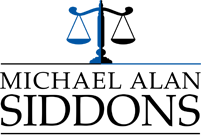There are many aspects to think about regarding secured debts, unsecured debts, and your finances. It is even more important to understand all aspects when one thinks about bankruptcy court, the bankruptcy code, and how to structure monthly payments for unsecured debts.
Whether you are thinking about your mortgage lender and the onerous mortgage payments or seem to have significant concerns due to your unsecured debt like credit card debt or medical bills, it is necessary to understand the bankruptcy code.
While the very mention of bankruptcy has a negative connotation, the practice can often be the exact assistance you need to pull yourself back up on your feet. This makes bankruptcy a viable solution for many individuals and families who need a second chance at financial freedom.
To help you understand the benefits of Chapter 13 bankruptcy and obtain these advantages, here are some of the top benefits of Chapter 13 bankruptcy.
Benefits of Filing for Chapter 13 Bankruptcy
It Lets You Retain Your Assets
Unlike Chapter 7 bankruptcy, which sells off a portion, majority, or entirety of your assets, Chapter 13 bankruptcy lets you retain all of your assets under certain conditions. This ensures that you don’t have to part with your hard-earned belongings and property even as you reorganize your funds for a better chance at financial freedom.
As a result, you can continue holding high-value assets such as your current car and home despite falling on hard times. This makes Chapter 13 bankruptcy a sought-after method to obtain financial stability.
Gives You a High Threshold for Qualification
When filing for Chapter 7 or liquidation bankruptcy, you must show that your income is low enough to pass the Chapter 7 means test. This threshold is often difficult to meet and makes your bankruptcy claim unapproved. On the other hand, filing for Chapter 13 or reorganization bankruptcy sets a threshold on your overall debt instead of your income.
As of May 2022, you can file for Chapter 13 bankruptcy if your unsecured debts are less than $394,725 and secured debts are less than $1,184,200. This sets a reasonable threshold for Chapter 13 bankruptcy accessible by many individuals across the United States.
It Allows You to Buy More Time for Your Debt Repayment
When your Chapter 13 bankruptcy filing goes through, you are given a payment plan that accounts for your creditors’ demands and your income. This payment plan is typically stretched across 3 to 5 years, which allows you to pay off your high debts in an easier fashion.
This is especially true if you have a lot of debt compared to your income and want to reschedule most of your debt payments at once. Instead of running from one creditor to another, filing for Chapter 13 bankruptcy can help you achieve this objective through a single avenue.
Encourages Your Creditors to Become More Flexible
Since Chapter 13 bankruptcy is all about reorganizing your debt, it also causes many creditors to treat this opportunity as a way to cut their losses instead of waiting for a longer period of debt settlement. In turn, they are more flexible in accepting proposed payment terms that would otherwise not be entertained by them.
This gives you the leeway to benefit from terms such as reducing the number of your current debt payments and stretching out your overall repayment duration. As a result, you can benefit from paying less than your original debt and maintaining the required balance between an adequate lifestyle and repaying your debt.
Enables You to Give Up Assets By Choice
In Chapter 7 bankruptcy, you are not allowed to pick and choose assets that you want to retain. There are exceptions and exemption limits for necessities such as cars and furniture. But your other property is subject to being liquidated. If you don’t have any extra cash at hand apart from your property, you can lose your high-value assets through this liquidation bankruptcy.
On the other hand, Chapter 13 bankruptcy allows you to choose any assets you may want to give up. This will enable you to reduce your overall debt while also picking those assets for liquidation that are not important to you.
Lets You Benefit From the Process Repeatedly
When you file for a Chapter 7 bankruptcy, you cannot apply for another Chapter 7 bankruptcy until eight years have passed between the filings. Similarly, if you filed for Chapter 7 previously, you have to wait four years between your applications for a Chapter 13 bankruptcy. This essentially exhausts your options of a safety net in case you run into a financial dead end again.
If you want to file for Chapter 7 later in life, the wait time is six years or until you have paid your Chapter 13 payments in full. But when you file for a Chapter 13 bankruptcy, you can file for one again after two years. This makes Chapter 13 a more future-conscious option that keeps the chances of unforeseen events in mind.
You Have to Consider Your Options Carefully
At Siddons Law, our Chapter 13 bankruptcy lawyers appreciate everyone’s right to a better life, especially financial hardships. Through our expertise in bankruptcy law, we can guide you through all possible options to reorganize your finances and live the comfortable life you deserve.
By working with the bankruptcy trustee, and the bankruptcy court, and understanding the bankruptcy code, our experienced bankruptcy attorney can help you manage your bankruptcy process. We understand bankruptcy relief, bankruptcy laws, and the value of debt relief when it comes to certain debts.
To see how our solutions can help, don’t hesitate to contact us at 610-255-7500 for a detailed consultation today. We will be glad to understand your concerns and assist you in breaking free of financial constraints without any delay.











